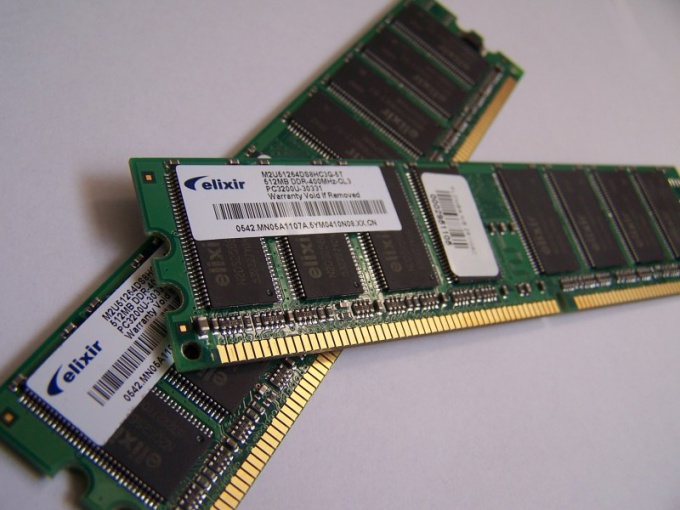Instruction
1
Faulty RAM can manifest itself in different ways. If when you turn on the computer does not boot, and issued repeated beeps, it could be a memory error. Frequent freezes or the computer restarts can also be due to damaged RAM.
2
Unplug the system unit from the power supply. Unscrew the tightening of guilt and remove the side panel. Chip RAM is very sensitive to static electricity. Before you take a RAM module, touch a radiator to remove static from your hands. Press down the latch that secures the slot, and remove it.
3
The simplest case of a malfunction of this device is the oxidation of contacts. Wipe them with an ordinary eraser to remove the patina. Then turn the corner of a sheet of heavy paper and clean the inside contacts of the slot.
4
If after this procedure, problems remain, this may be due to bad soldering of the elements of the device. For defect elimination it is possible to use construction Hairdryer. Warm the charge from the back side to secure the solder.
5
The cause of the fault can be broken off the element. Carefully inspect the module. If you find a broken "legs"-contacts, study the label next to the damage. It consists of letters and numbers. Find on-Board semiconductor denoted by the same letters. Solder the defective item to the place of the damaged one.
6
If the contact lamellae on the Board is seriously damaged, you can try to replace them. For this purpose, another module (the"donor") to gently remove the slats to the segment of the contact track. Attach the lamella to the damaged area and solder track a soldering iron with a fine tip. Lamella glue to the Board with cyanocrylate. Repaired therefore, the module should be removed from the slot, since the probability of a new damage.
